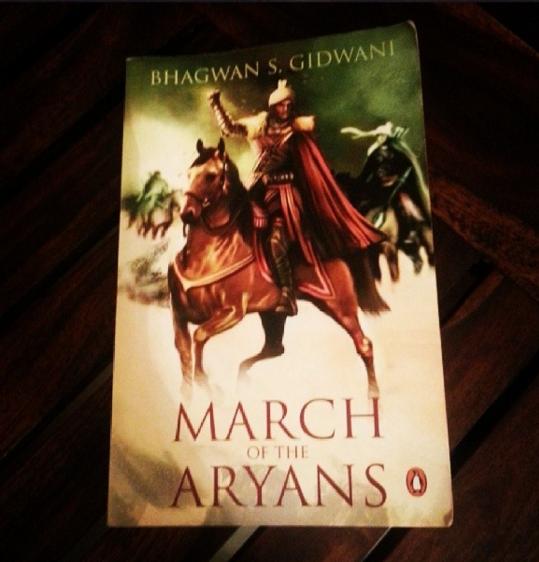Bhagwan S Gidwani
I feel a little conflicted about this book – on one side, it is wonderful to read a perspective on the dawn of civilisation and the kind of denizens our land had, but on the other, this is clearly a work of fiction, and the author himself states that his sources are not any written ones, but oral traditional memory from different parts of the world. It is clearly aimed at debunking the Aryan invasion theory, and tries to show that the Aryans had merely returned to their place of origin after traveling to many parts of the world.
In addition to demolishing the invasion theory, the author also tries to show that the Dravidian culture was not really independent in origin, but that civilisations on the Ganga, Sindhu-Saraswati, and other regions all had a common point from which they all emanated.
The author uses the character of the Sindhu Putra – an ordinary human mistaken to be a form of God – as his anchor in the first half of the book, and albeit indirectly, his influence is also what led the Aryans to travel to China, Afghanistan, Sumeria, Egypt, Russia, Europe in search of a land that was pure. While the first half is about Sindhu Putra uniting the land with a common belief system, the second half deals with the Aryan exodus and their trials and tribulations as they travel to far off lands.
The book is adapted from his earlier novel – Return of the Aryans – I remember reading it a long while back. I found the narrative of this book a bit lethargic and the connect to modern words, places and customs (that the author tries to establish) sometimes forced. That’s not to say that he is not right, it is just that the coincidences are a little hard to imagine. The plot seems as though the author had clear resting spots in mind before he started out.
In essence, though I appreciate the intention of the book, I am not sure if this was the right execution. I wouldn’t be surprised if someone at some point in time classifies this as history, starting another round of misconceptions!

